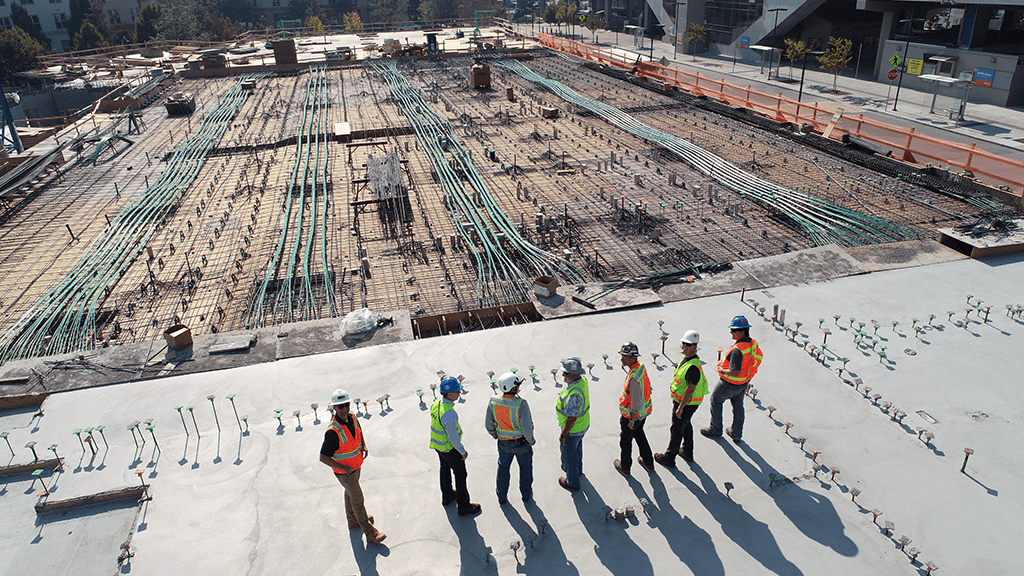
Menu

According to an article by Sebastian Obando in HealthcareDive, Healthcare construction stays strong despite surging costs, with spending in the arena near all-time highs, as per a recent Federal Reserve Bank of St. Louis healthcare construction report.
Instances abound:
Those undertakings are moving forward despite healthcare construction expenses remaining near all-time highs, said Chris Hopper, executive vice president, and general manager at Skanska, a Sweden-based contractor.
“Construction expenditures across all sectors, including healthcare, stay at all-time highs, aggravated by the double-digit annualized inflation rates. Making matters more alarming for some if the rising cost of lending rates,” stated Hopper. “From a healthcare standpoint, particularly where schedule urgency is of utmost importance, we are witnessing projects move forward despite the higher costs.”
Electrical switchgear, HVAC, and emergency generators were the most significant supply chain considerations for healthcare projects, said Hopper. He expects volatility to persist for the next eight to 12 months.
“Any big [mechanical, electrical and plumbing] equipment will take more time and cost more because healthcare MEP systems will almost always need customization,” expressed Hopper. “Whereas other initiatives can get ‘off the shelf units and may not be liable to inflation or lead time challenges.”
In a healthcare project, upwards of 35% to 50% of the construction expenses may be in these mechanical, electrical, and plumbing systems. Hopper expressed that ratio may be half as much in a school building or office construction.
So while MEP equipment and material expenditures are already significantly more elevated than pre-pandemic levels, the customization and strict product specifications for healthcare facilities have further affected those prices, said Hopper.
“So when costs are up as they have been for MEP systems, it is exacerbated by this fact,” he expressed.
But while materials expenses have been higher, supply chain issues are also adding to the problem in the sector.
“The more major problem is unpredictably long lead times,” voiced Eric Peabody, principal and medical planner with Taylor Design, an architecture and strategic planning company with five offices in California. “Even for developments that have been secured by earlier bidding, it is very challenging to predict which items are going to be postponed in delivery to the job site.”
Even holds on everyday items like door hardware can throw a wrench in timetables by, for example, preventing complete fire safety inspections required to move on to other phases of construction, told Peabody. That, in turn, concerns construction costs as workers need to be re-sequenced on the job, expressed Peabody.
“Like much the remainder of the economy, construction materials are undergoing significant cost inflation,” said Peabody. “It’s not just the standard big equipment and overseas product that take forever to reach.”
However, those escalated costs are not stopping healthcare projects from pushing forward, said Kevin Hinrichs, president of Taylor Design, because even more funds would be lost if they don’t.
“By not pursuing through with planned projects, healthcare networks would forfeit more in revenue than they pay in construction costs, even with price escalation,” declared Hinrichs. “Some are even revving project schedules, and presumably paying more to do so, as a method to get patients in the door faster and revenue coming in sooner.”
Bid activity in the healthcare market was the second-highest of the 12 major sectors in the second quarter of 2022, per the PSMJ Resources Quarterly Market Forecast survey of architecture, engineering, and construction firm leaders.
Almost two-thirds of respondents said proposal activity rose from the first quarter of 2022, while only about 5.5% said their proposal possibilities decreased. The remaining 29% said chances existed about the same, quarter over quarter.
The quick volume of procurement in healthcare construction during the first two quarters of 2022 can potentially be attributed to suppressed demand following the past two years of the pandemic, while some clients want to get ahead of further cost escalation, experts said.